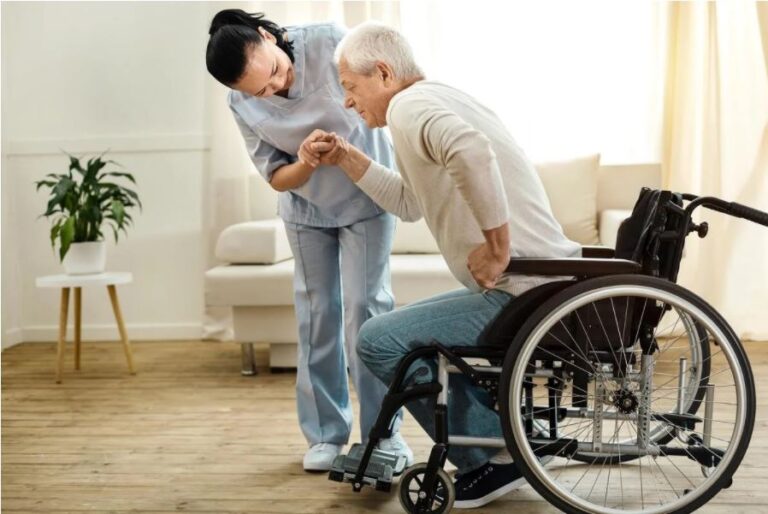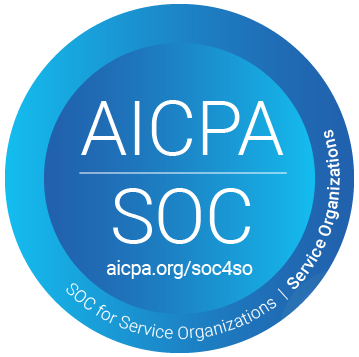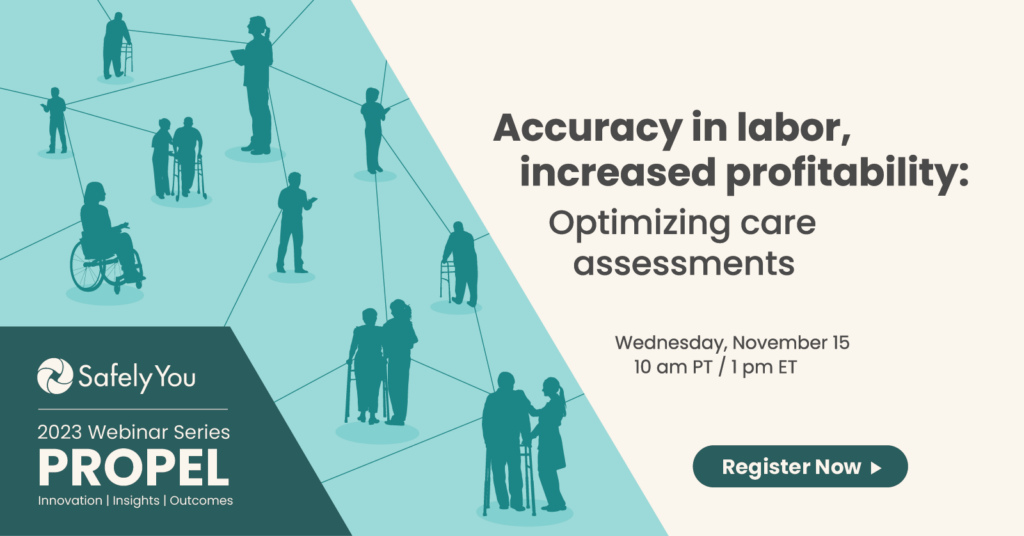Helping a person living with dementia transfer to or from a bed to a chair safely may seem like a simple task, but the truth is, both people can be injured if you aren’t careful with the procedure. With the right instructions and the correct aids, you can minimize most problems that may occur when doing a sit to stand transfer.
It is critical to take into consideration each person’s strengths and weaknesses, the proper mobility devices to use, and the environment. The following are some established recommendations for assisting with a safe transfer from sitting to standing:
- Ask the person for their help: Use simple instructions, even if you think the person will not understand you, providing plenty of time to respond. Sometimes, all a person needs in the early stages of dementia is a hand on the lower back and one on the shoulder to gently guide them forward.
- Use a gait belt or other lift support devices: Support the transfer instead of physically lifting from a sit to stand position to reduce the chance of injuring yourself.
- Position walker or wheelchair nearby: Have the device close to the bed or chair and lock the wheels. Check the area for clutter so you or the resident don’t trip.
- Maintain a “neutral” spine: Anytime that you lose the natural lumbar curve, you’re putting your back at risk for injury. It’s the small micro traumas that develop into an injury versus just one single isolated event.
- Determine the best position: For standing transfers, make sure the resident’s feet are positioned slightly under his or her knees. For seated transfers, ensure their head/shoulders are bending away from the surface they are transferring from.
- Know their strengths: If the resident you are assisting has a stronger left or right side, make sure to lead with that side. If they tend to push or grab, lead with the resident’s non-pushing or grabbing side, or position your hands to control the “pushing/grabbing arm(s).
- Communicate: Give simple, step-by-step instructions, especially when you’re ready to transfer. Counting to three can be quite helpful – you can then both move at the same time. Make sure to allow for greater time if the resident has Parkinson’s disease because initiating movement will be more difficult.
- Use momentum: While transferring encourage rocking or count to three.
- Take a break: Give the resident a moment to adjust to each new position.
- Stay aware of changes: From day to day, keep in mind that with individuals with dementia, what works today may not be work a month from now.
Now that we know some safe techniques, let’s review what NOT to do when transferring a resident with dementia from a seated position to standing:
- Don’t bend or round out your back. This puts tremendous strain on the joints and will lead to a back injury over time. Keeping your back straight and bending with your knees allows you to lift with the stronger leg muscles, not the weaker back muscles.
- Don’t do all the work. Many residents, even in the late stages, can offer limited assistance if you give them simple instructions and enough time to respond.
- Don’t lift under the resident’s arms. This can cause damage to the arms and shoulder joint, and it doesn’t allow you adequate control of the person’s body. In addition, it’s painful for the resident if you grab them here, because this is where a network of nerves and blood vessels run (brachial plexus). If you need to give assistance, assist from the hips.
- Don’t twist your body without moving your feet in the same direction. This is how many injuries occur.
- Don’t lift. To reduce your risk of injury, it’s always better NOT to physically lift a person. Use special techniques so you can have the resident use his or her remaining abilities to help and, when needed, use special equipment.
To learn more about transfer risks, check out our blog: How to Reduce Transfer Risks and Prevent Falls in Memory Care.









